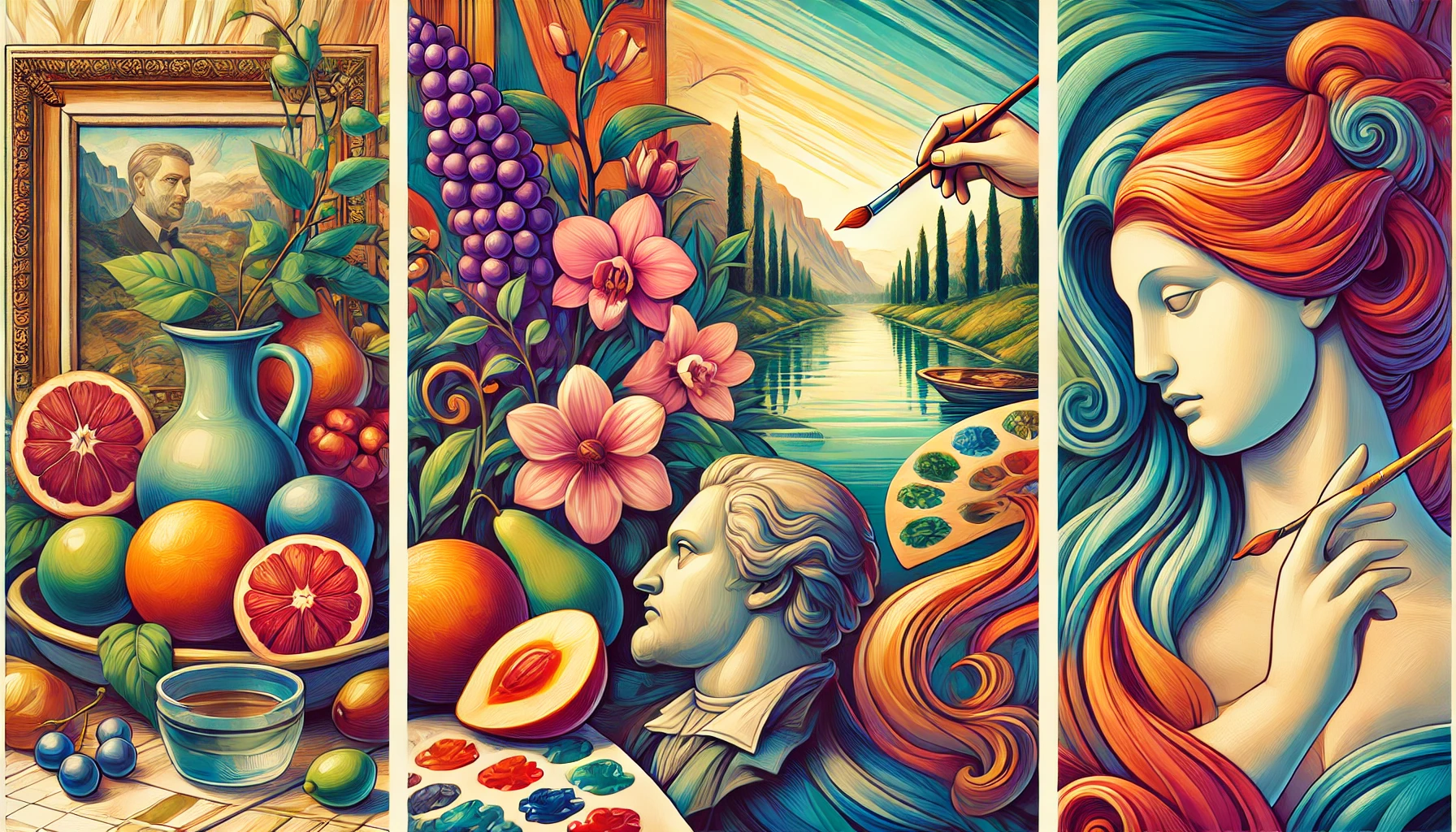Oil painting, with its rich history and unparalleled depth, has long been a favorite medium for artists worldwide. The versatility of oil paints allows for a variety of techniques and styles, each offering unique possibilities for expression. In this article, we’ll explore some of the most prominent styles of oil painting, helping you understand their distinctive characteristics and how they can be applied to create compelling works of art.
The History and Appeal of Oil Painting
Before diving into the different styles, it’s essential to appreciate why oil painting has stood the test of time. Oil paints, made from pigments suspended in drying oils like linseed oil, offer a luminous quality that can’t be matched by other mediums. This medium has been favored since the 15th century due to its flexibility, durability, and the depth of color it can produce. Artists like Leonardo da Vinci, Rembrandt, and Vincent van Gogh have all harnessed the power of oil paints to create masterpieces that continue to captivate audiences today.
Realism: Capturing Life with Precision
Realism is a style of painting that aims to depict subjects as accurately as possible, without idealization or abstraction. This style requires a high level of technical skill and attention to detail. Artists working in realism often spend significant time studying their subjects to capture every nuance of light, shadow, and texture.
Characteristics of Realism:
- Detailed Observation: Realism involves meticulous observation and representation of the subject matter.
- Accurate Proportions: Artists strive for precise proportions and realistic perspectives.
- Natural Color Palettes: Colors are mixed to reflect true-to-life hues and tones.
Realism is perfect for those who appreciate the beauty in everyday scenes and seek to replicate the world around them with fidelity.
Impressionism: The Play of Light and Color
Impressionism emerged in the late 19th century as a reaction against the rigidity of academic painting. Impressionists sought to capture the fleeting effects of light and color in their works, often painting en plein air (outdoors) to observe natural scenes directly.
Characteristics of Impressionism:
- Loose Brushwork: Quick, visible brushstrokes that convey movement and light.
- Focus on Light: Emphasis on the changing qualities of light, often at different times of the day.
- Vibrant Colors: Use of pure, unmixed colors to create a sense of immediacy and vibrancy.
Impressionism is ideal for artists who want to explore the effects of light and color in their work, creating a sense of momentary beauty.
Abstract Expressionism: Emotion and Gesture
Abstract Expressionism arose in the mid-20th century, focusing on the spontaneous and expressive application of paint. This style is less concerned with depicting reality and more with conveying emotions and ideas through color, form, and texture.
Characteristics of Abstract Expressionism:
- Expressive Techniques: Use of techniques like dripping, splattering, and impasto to create texture and depth.
- Non-Representational: Often lacks recognizable subjects, focusing instead on abstract forms.
- Emotional Impact: Aims to evoke emotions and reactions through dynamic compositions and bold colors.
Abstract Expressionism is suited for artists who wish to express their inner feelings and ideas through innovative and unrestrained methods.
Surrealism: Dreams and Reality
Surrealism, influenced by the works of Freud and the subconscious mind, blends reality with dream-like elements. Surrealist artists create fantastical scenes that challenge our perception of reality.
Characteristics of Surrealism:
- Dream Imagery: Use of bizarre, dream-like scenes that defy logical explanation.
- Juxtaposition: Placing unrelated objects together to create surprising and thought-provoking compositions.
- Detailed Rendering: Often employs realistic techniques to render fantastical subjects.
Surrealism is for those fascinated by the subconscious mind and the possibilities of blending reality with imagination.
Hyperrealism: Beyond Realism
Hyperrealism takes realism to the next level, creating paintings that resemble high-resolution photographs. This style requires exceptional skill and patience, as artists pay extreme attention to detail.
Characteristics of Hyperrealism:
- Photographic Quality: Paintings that look as detailed and precise as photographs.
- Texture and Detail: Minute details are meticulously rendered, from skin pores to fabric textures.
- Emotion and Narrative: Often includes a narrative element, telling a story through hyper-detailed images.
Hyperrealism is perfect for artists who enjoy working with precision and want to challenge the boundaries between painting and photography.
When exploring the different styles of oil painting, it’s crucial to consider what each style can bring to your artistic practice. Understanding these styles helps artists to find their unique voices and express their creativity in varied ways. Oil painting techniques like realism, impressionism, abstract expressionism, surrealism, and hyperrealism each offer distinct advantages and creative possibilities. Whether you’re aiming for detailed realism or emotional abstraction, mastering these styles can significantly enhance your artistic journey.
Tips for Exploring Oil Painting Styles
To help you delve deeper into the world of oil painting, here are some practical tips:
- Experiment with Techniques: Try different styles to find what resonates with you. Don’t be afraid to mix techniques and create something unique.
- Study the Masters: Look at works by famous artists in each style to understand their approach and techniques.
- Practice Regularly: Like any skill, improving your painting takes time and practice. Dedicate regular time to painting and experimenting with new styles.
- Seek Feedback: Join artist communities or take classes to get feedback on your work. Constructive criticism can help you grow as an artist.
- Be Patient: Mastery doesn’t come overnight. Be patient with your progress and enjoy the learning process.
Final Thoughts
Understanding the different styles of oil painting can open up a world of creative possibilities. Each style offers unique ways to express your vision and bring your artistic ideas to life. Whether you’re drawn to the precision of realism or the emotional depth of abstract expressionism, exploring these styles will enrich your artistic practice and help you develop your unique voice. So grab your brushes, squeeze out some vibrant oils, and start your journey into the fascinating world of oil painting!
By the end of this exploration, you should have a clear understanding of the various styles of oil painting and feel inspired to try them out in your artistic endeavors. Happy painting!

